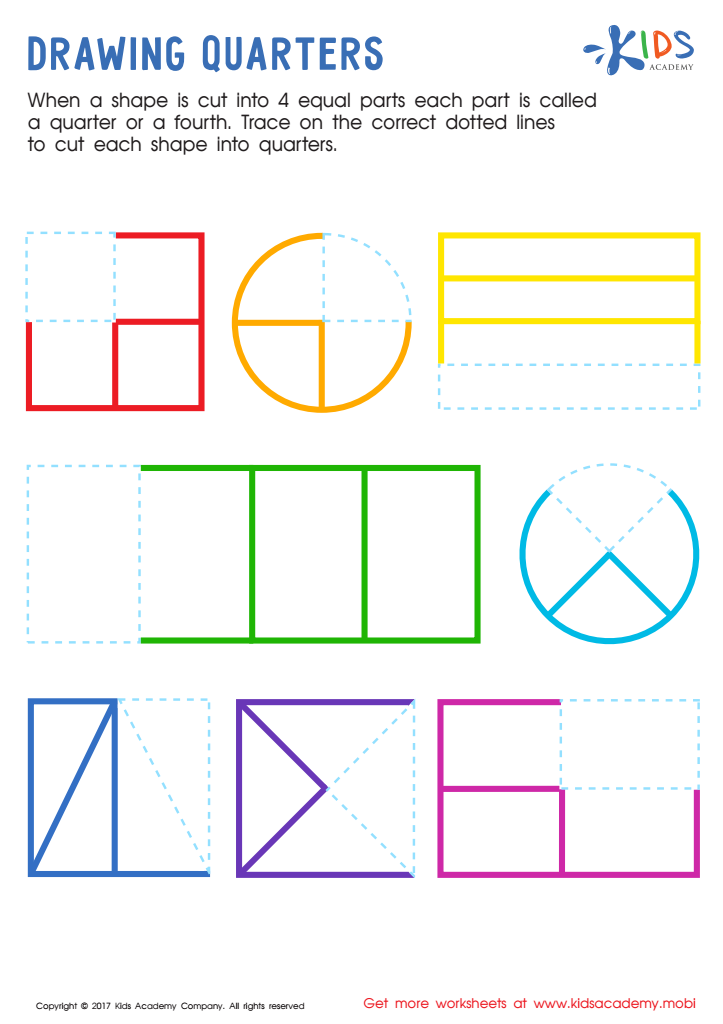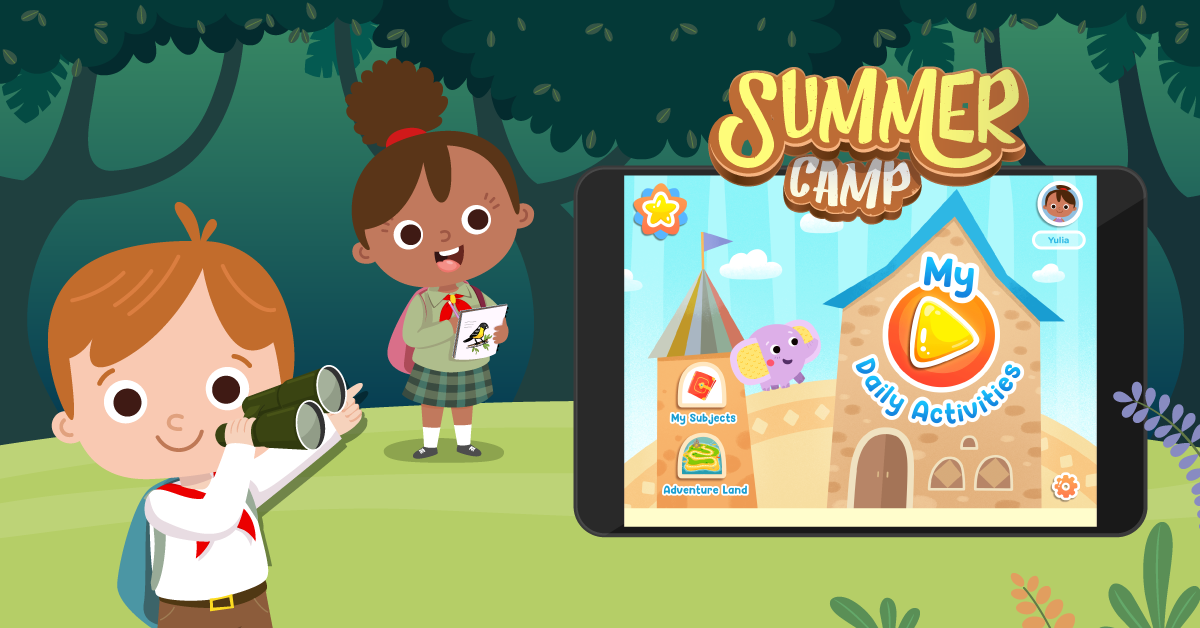Identifying quarters Worksheets for Kids
1 filtered results
-
From - To


Drawing Quarters Worksheet
Question/Answer
How to train the Identifying quarters skill in Grade 1 students learning about Geometry?
To train Grade 1 students in identifying quarters, use tangible activities like dividing pizza or pie models into four equal parts. Incorporate visual aids such as pictures and drawings of quarters, and engage them with interactive games that involve grouping objects into quarters. Reinforce learning by asking students to color or mark one quarter of various shapes on worksheets.
How does the mastery of the Identifying quarters skill affect a student's performance at an early age?
Mastery of the Identifying quarters skill at an early age positively affects a student's performance by enhancing their understanding of fractions, division, and basic financial literacy. It serves as a foundation for more complex mathematical concepts, improves problem-solving abilities, and supports the development of logical thinking. This foundational skill fosters confidence in math, contributing to overall academic success.
Why is the Identifying quarters skill important for Grade 1 students?
The Identifying quarters skill is important for Grade 1 students as it lays the foundational understanding of fractions, division, and the concept of part-whole relationships. This skill enhances their mathematical reasoning and prepares them for more complex mathematical operations. It also helps in developing their problem-solving abilities and practical life skills, such as money management.
 Assign to the classroom
Assign to the classroom
.jpg)











